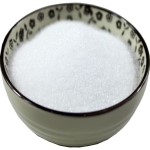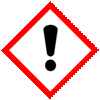CAS Number 1066-33-7, Ammonium Bicarbonate or Ammonium Hydrogen Carbonate BP Ph Eur FCC Food Grade Manufacturers Exporters







CAS Number 1066-33-7, Ammonium Bicarbonate or Ammonium Hydrogen Carbonate Manufacturer Exporter
For Properties Specifications of Ammonium Bicarbonate or Ammonium Hydrogen Carbonate Click Properties, Specifications of Ammonium Bicarbonate or Ammonium Hydrogen Carbonate Manufacturer.
For Uses of Ammonium Bicarbonate Click Uses of Ammonium Bicarbonate Manufacturer.
For For SDS MSDS Sheet of Ammonium Bicarbonate Click SDS Safety Data Sheet MSDS Sheet of Ammonium Bicarbonate Manufacturer.
The Properties and Specifications of Ammonium Bicarbonate:
Ammonium Bicarbonate BP Ph Eur Grade Specifications
(Ammonium Hydrogen Carbonate)
NH4HCO3 --- 79.1 --- CAS 1066-33-7
DEFINITION
Ammonium Hydrogen Carbonate contains not less than 98.0 per cent and not more than 101.0 per cent of the equivalent of ammonium hydrogen carbonate.
CHARACTERS
A fine, white, crystalline powder or white crystals, slightly hygroscopic, freely soluble in water, practically insoluble in alcohol.
It volatilizes rapidly at 60C. The volatilization takes place slowly at ambient temperatures if the substance is slightly moist. It is in a state of equilibrium with ammonium carbamate.
IDENTIFICATION
A. It gives the reaction of carbonates and bicarbonates.
B. Dissolve 50 mg in 2 ml of water. The solution gives the reaction of ammonium salts.
TESTS
Solution S: Dissolve 14.0 g in 100 ml of distilled water. Boil to remove the ammonia, allow to cool and dilute to 100.0 ml with distilled water.
Chlorides: Dilute 5 ml of solution S to 15 ml with water. The solution complies with the limit test for chlorides (70 ppm).
Sulphates: 15 ml of solution S complies with the limit test for sulphates (70 ppm)
Iron: Dilute 1.8 ml of solution S to 10 ml with water. The solution complies with the limit test for iron (40 ppm).
Heavy metals: Dissolve cautiously 2.5 g in 25 ml of 1 M hydrochloric acid. 12 ml of the solution complies with limit test A for heavy metals (10 ppm)
Ammonium Bicarbonate FCC Food Grade Specifications
NH4HCO3 Formula weight 79.06
INS: 503(ii) CAS 1066-33-7
DESCRIPTION
It occurs as white crystals or as a crystalline powder. It volatilizes rapidly at 60C, dissociating into ammonia, carbon dioxide, and water, but it is quite stable at room temperature. One gram dissolves in about 6mL of water. It is insoluble in alcohol.
REQUIREMENTS
Identification: A sample gives positive tests for Ammonium and for Bicarbonate.
Assay: Not less than 99.0% and not more than 100.5% of NH4HCO3.
Chloride: Not more than 0.003%.
Lead: Not more than 3 mg/kg.
Nonvolatile Residue: Not more than 0.05% (0.55% for products containing a suitable ant caking agent).
Sulfur Compounds (as SO4): Not more than 0.007%.
The Uses of Ammonium Bicarbonate:
Ammonium Bicarbonate iss used in pharmaceuticals, baking powders and fire extinguishers, and to make dyes and pigments. Ammonium bicarbonate is a common leavening agent used in the baking industry.
The MSDS-SDS Hazard Statement of Ammonium Bicarbonate:
Ammonium Bicarbonate SDS, Safety Data Sheet
MSDS Sheet, Material Safety Data Sheet 03-Dec-22
1. Product Identification
Product Name & Other Names: Ammonium Bicarbonate, Ammonium hydrogen carbonate; Ammonium acid carbonate.
CAS No.: 1066-33-7
EINECS EC Number: 213-911-5
Molecular Weight: 79.06
Chemical Formula: NH4HCO3
Relevant uses and uses advised against (if any): Industrial Manufacturing.
2. Hazards Identification
GHS, Globally Harmonized System Classification in accordance with 29 CFR 1910
Classification according to Regulation (EC) No 1272/2008:
Acute toxicity, Oral Category 4, H302
Hazardous to the aquatic environment, acute hazard Category 3, H402
Labeling according to GHS & Regulation (EC) No 1272/2008
GHS Label Elements  Irritant |
Signal Words: Warning
Hazard statements:
H302 Harmful if swallowed.
H402: Harmful to aquatic life.
Precautionary statements:
P264 Wash skin thoroughly after handling.
P270 Do not eat, drink or smoke when using this product.
P273 Avoid release to the environment.
P314: Get Medical advice/attention if you feel unwell.
3. Composition/Information on Ingredients
Product Name & Other Names: Ammonium Bicarbonate, Ammonium hydrogen carbonate; Ammonium acid carbonate.
CAS No.: 1066-33-7
EINECS EC Number: 213-911-5
4. First Aid Measures
Always seek medical attention after first aid measures are provided.
Inhalation: If inhaled, remove to fresh air. If not breathing, give artificial respiration. If breathing is difficult, give oxygen. Get medical attention.
Ingestion: Do NOT induce vomiting unless directed to do so by medical personnel. Never give anything by mouth to an unconscious person. If large quantities of this material are swallowed, call a physician immediately. Loosen tight clothing such as a collar, tie, belt, or waistband. If large amounts were swallowed, get medical advice.
Skin Contact: Immediately flush skin with plenty of soap and water for at least 15 minutes. Remove contaminated clothing and shoes. Wash clothing before reuse. Thoroughly clean shoes before reuse. Get medical attention if irritation develops.
Eye Contact: Immediately flush eyes with plenty of water for at least 15 minutes, lifting upper and lower eyelids occasionally. Get medical attention if irritation persists.
5. Fire Fighting Measures
Fire: Not considered to be a fire hazard. Irritating and toxic ammonia gas and nitrogen oxides may form in fires.
Fire Extinguishing Media: Use water spray, alcohol-resistant foam, dry chemical, or carbon dioxide. Use means suitable for extinguishing surrounding fire.
Special Information: In the event of a fire, wear full protective clothing and NIOSH-approved self-contained breathing apparatus with full face piece operated in the pressure demand or other positive pressure mode. At high temperatures under fire conditions, it may produce toxic or irritating fumes. Fire-extinguishing work is done from the windward and the suitable fire-extinguishing method according to the surrounding situation is used.
6. Accidental Release Measures
Personal precautions, protective equipment, and emergency procedures: Avoid breathing dust/fumes/gas/mist/vapors/spray. Ensure adequate ventilation. Use individual protective equipment (waterproof boots, suitable protective clothing, safety glasses, etc.). Do not approach facing the wind.
Environmental precautions: Do not let the product enter drains, soil, or water sources.
Methods and materials used for containment Cleanup procedures and Storage: Contain spilled material. Cover with an inert, non-combustible absorbent material, (e.g. sand, earth, diatomaceous earth, vermiculite). Use a shovel to put the material into a convenient waste disposal container. Prevent further leakage or spillage if safe to do so. Do not let product enter drains. Discharge into the environment must be avoided.
7. Handling and Storage
Precautions for safe handling: Apply according to good manufacturing and industrial hygiene practices. Ensure proper ventilation. Wash thoroughly after handling. Do not drink, eat, or smoke while handling. Avoid contact with skin, eyes, and clothing. Minimize dust generation. Avoid breathing dust/fumes/gas/mist/vapors/spray. Keep container tightly closed. Avoid ingestion and inhalation. Use individual protective equipment (waterproof boots, suitable protective clothing, safety glasses, etc.).
Conditions for safe storage, including any incompatibilities: Store in cool, dry, and ventilated area away from heat sources and protected from sunlight in tightly closed original container. Keep air contact to a minimum. Do not leave the material container open. Store protected from heat, sparks and ignition sources and incompatible materials. Avoid contact with skin and eyes. Avoid inhalation of dust/mist/vapor. Do not store with incompatible materials like acids, caustic alkalis, and strong oxidizing agents. Store at temperatures below 80F (27C) to minimize decomposition. Segregate from nitrites and alkaline substances. Storage and transport only combined with food materials or food additives. Separate from flavoring agents. Segregate from strong acids. Segregate from strong bases. Do not store with: Sodium nitrate, nitrite, and similar materials.
8. Exposure Controls/Personal Protection
Airborne Exposure Limits: None established.
Ventilation System: A system of local and/or general exhaust is recommended to keep employee exposures as low as possible.
Personal Respirators (NIOSH Approved): For conditions of use where exposure to dust or mist is apparent and engineering controls are not feasible, a particulate respirator may be worn.
Skin Protection: Wear protective gloves and clean body-covering clothing.
Eye Protection: Use chemical safety goggles and/or full face shield where dusting or splashing of solutions is possible. Maintain eye wash fountain and quick-drench facilities in work area.
Other Control Measures: Maintain good housekeeping in work area. Handle in accordance with good industrial hygiene and safety practice.
9. Physical and Chemical Properties
Appearance: Fine white crystals.
Odor: Slight ammonia odor.
Odor threshold: Not available.
pH: 7.8
Relative density: 1.59
Melting Point: 107.5C (226F) (Decomposes 36-60C)
Initial boiling point and boiling range: Not available.
Flash point: Not available.
Auto-ignition temperature: Not available.
Decomposition temperature: Not available.
Upper/lower flammability or explosive limits: Not available.
Vapor pressure: Not available.
Vapor density: Not available.
Evaporation rate: Not available.
Flammability (solid, gas): Not available.
Partition coefficient: n-octanol/water: Not available.
Solubility: 17.4% @ 20C (68F) in water.
Viscosity: Not available.
10. Stability and Reactivity
Stability: Stable under ordinary conditions of use and storage.
Hazardous Decomposition Products: Burning may produce ammonia, nitrogen oxides. Burning may produce ammonia, carbon monoxide, carbon dioxide, nitrogen oxides.
Hazardous Polymerization: Will not occur.
Incompatibilities: Can react dangerously with acids, caustic alkalis, and strong oxidizing agents.
Conditions to Avoid: Heat, incompatibles.
11. Toxicological Information
Acute toxicity: LD50 Oral - Rat - 1576 mg/kg
Carcinogenicity: The product is not classed as carcinogen by IARC, ACGIH, NTP, OSHA.
Mutagenic Effects: No information available
Reproductive Effects: No information available.
Developmental Effects: No information available.
Teratogenicity: No information available.
12. Ecological Information
Toxicity to fish:
LC50 Fish 1: 0.16 - 1.1 mg/l (Exposure time: 96 h - Species: Oncorhynchus mykiss)
LC50 Fish 2: 0.615 - 0.712 mg/l (Exposure time: 96 h - Species: Oncorhynchus mykiss)
Environmental Toxicity: Harmful to aquatic life. Avoid release to the environment.
Persistence and Degradability: Not likely to persist due to water solubility.
Mobility: Mobile due to water solubility.
Bioaccumulation/ Accumulation: Unlikely to accumulate.
Results of PBT and vPvB assessment: This substance/mixture contains no components considered to be either persistent, bioaccumulative and toxic (PBT), or very persistent and very bioaccumulative (vPvB) at levels of 0.1% or higher.
13. Disposal Considerations
Whatever cannot be saved for recovery or recycling should be managed in an appropriate and approved waste disposal facility.
14. Transport Information
DOT USA, TDG Canada & ADR/RID Europe: Not controlled.
IMDG/IMO: Not controlled.
IATA/ICAO: Not controlled.
15. Regulatory Information
USA:
California Proposition 65: Not Listed
SARA 311: No SARA Hazards
SARA 312: No SARA Hazards.
16. Other Information
Disclaimer:
*************************
Our company provides this SDS information sheet contained herein in good faith but makes no representation as to its comprehensiveness or accuracy. This MSDS sheet is intended only as a guide to the appropriate precautionary handling of the material by a properly trained person using this product. Individuals receiving the information must exercise their independent judgment in determining its appropriateness for a particular purpose.
*************************
Anmol Chemicals & Pharmaceuticals Pvt. Ltd. is an off-shoot of Anmol Chemicals Taloja. It is located in MIDC Taloja and it is manufacturing pharmaceutical grades of API, Excepients, Food grade and Reagent grade chemicals. Anmol Chemicals & Pharmaceuticals Pvt. Ltd. is a several decades old group of companies, engaged in manufacturing, supplying, distributing, wholesale supplies for actual users, retail or small pack supplies for research and development chemicals, fine and speciality chemicals, pharmaceutical excipients, mineral fortifiers in chemically pure, Analytical reagent grade, IP BP USP Ph Eur EP JP and other pharmaceutical grade monograph including FCC Food grade chemicals and Nutraceuticals, Mineral Fortifiers at best prices.

Ammonium Bicarbonate
Structure
CAS Number 1066-33-7, Ammonium Bicarbonate or Ammonium Hydrogen Carbonate Manufacturer Exporter
ANMOL CHEMICALS & PHARMACEUTICALS Pvt. Ltd.
India, USA, Europe, UAE
TELEPHONE: +912223770100
Navi Mumbai, INDIA
e-mail: info(At the rate i.e. @)anmol.org
Copyright. 3-may-25
We manufacture:
Glacial Acetic Acid Manufacturer
Ammonia Solution Concentrated or Ammonium Hydroxide Solution
Aluminum Chloride Hexahydrate Anhydrous
Aluminum Chlorohydrate Solution Powder
Dihydroxyaluminum Aminoacetate
Dihydroxyaluminum Sodium Carbonate

